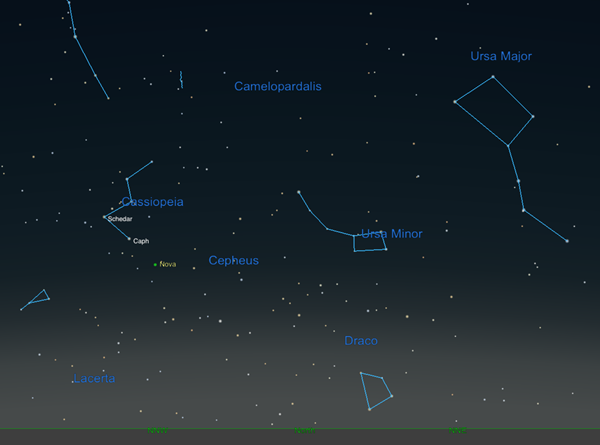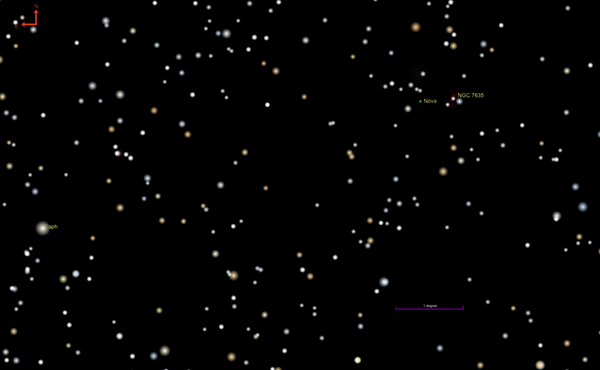Key Takeaways:
At around 7 P.M. JST on the evening of March 18, Japanese amateur astronomer Yuji Nakamura spotted something strange: A new point of light in the familiar constellation Cassiopeia the Queen.
Researchers at Kyoto University quickly followed up using the 3.8-meter Seimei Telescope atop Mt. Chikurinji in Japan. They obtained a spectrum of the new object, hoping to determine its nature based on clues hiding in its light.
They discovered that the object, which is cataloged as PNV J23244760+6111140, is a classical nova: An outburst from a white dwarf that’s stealing matter from its nearby companion star.
The new nova is growing brighter, too. At the time of its discovery (March 18), it was shining at magnitude 9.6. But within a matter of hours, it had brightened to magnitude 9.1. Images taken earlier today (March 19), show it has brightened yet again, reaching magnitude 7.8. That’s bright enough to spot it with binoculars from your backyard.
For those in the Northern Hemisphere, start by identifying the familiar “W” of Cassiopeia, which is visible high in the northwestern sky once the Sun sets. As @popastro points out, if you follow a line from the 2nd magnitude star Schedar (Alpha [α] Cassiopeiae) through the first magnitude star Caph (Beta [β] Cassiopeiae), you’ll be directed almost right to the nova’s location.
The nova sits about 5.9° northwest of Caph, which marks the western end of the W asterism. Alternatively, you can find the nova about 30′ east-southeast of NGC 7635, also known as the Bubble Nebula, or 10′ northwest of the magnitude 6.6 field star, HIP 115691.
For those with go-to instruments, you can slew directly to PNV J23244760+6111140 by inputting the following coordinates:
Right Ascension: 23h 24m 47.60s
Declination: +61° 11′ 14.0″
It’s hard to tell how long PNV J23244760+6111140 will be visible or how bright it will ultimately get. And that means you should track it down as soon as possible. So, turn your binoculars or telescope to Cassiopeia this weekend and stay tuned as astronomers following this exciting event!












